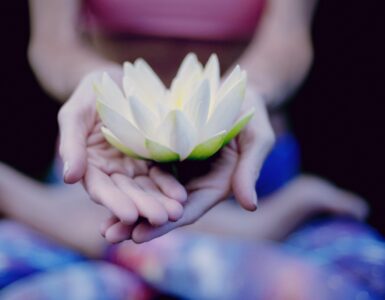For thousands of years, astrologers, shamans and farmers have used the knowledge of moon cycles to their advantage to gain from its positive energy. Understanding moon cycles can help you tap into the moon’s power and energy, too.

While moon signs are a part of astrology, moon cycles are also both a New Age and ancient practice. Moon cycles affect our emotions, and as such we have “lunar personalities.”
Ceremonies and blessings focused around the full or new moon have been a practice for millennia. Shaman, astrologers, farmers and other learned practitioners, who possess a deep understanding of the connections to the moon and its cycles, based a number of things around the phases of the moon, such as rituals, celebrations, festivals, or ancient fertility rites.
Even farmers followed moon cycles for planting. In farming, the new moon and the first quarter, or waxing phases, were considered a wet and fertile time, a time for planting above-ground crops, laying down sod or grafting trees and transplanting.
How moon cycles work
A “moon cycle,” also called a “lunar cycle,” is a reference to the moon’s continuous orbit around the earth. As the sun illuminates the earth during this orbit, we see it at different angles, seeing it full or shadowed. We call this different appearance “phases” and the moon’s progress in this orbit a cycle or “age.”
As the moon orbits the earth, it goes through eight phases once every 29.53 days. The technical term for this cycle is a “lunation.” From a technical standpoint, this period of time is known as a “synodic” month. Starting from the new moon, at the midpoint of this cycle, is when the moon appears full, at an age of approximately 14 .5 days. It reaches a new moon again (when the moon is not visible) about 14.5 days later, at a total age of about 29.53 days.
8 phases of the moon & their names
- New (also called the Dark Moon) – not visible
- Waxing Crescent
- First Quarter – commonly called a “half moon”
- Waxing Gibbous
- Full – we can see the entire illuminated portion of the moon
- Waning Gibbous
- Third Quarter – another “half moon”, but the illuminated part is opposite of the 8. First Quarter
- Waning Crescent
(cycle repeats)
Lunar cycles & astrology
Practitioners of astrology and the new age used the term “moon cycle” to describe the different phases of the moon. In astrology, the moon is considered female and plays a role in our emotions, how we feel about things, fertility and body cycles. Our emotions can be at their strongest when the moon is either new or full, with emotions being more positive and calm during a new moon.
How full moons affect us
Full moons tend to amplify emotions, increasing our sensitivity. As a result, we can have strong reactions to stress. We also may go into “survival mode,” putting our needs first during this time. The influence of a full moon can continue for up to three days after the end of its phase.
How new moons affect us
New moons tend to have the opposite effect of full moons, by normalizing emotions and bringing calmness. It’s also a time when we have confidence and our determination is strong. New moon brings positive energy. During this time we are also more supportive of others. The influence of a new moon can continue for up to three days after the end of its phase.
Using the power of the new moon
Because the new moon brings positivity and abundant energy, it’s advantageous to make the most of this time. You may want to write down a list of wishes and goals in full detail. Write these down in an organizational manner, meaning, listing out your desires for the next few days, the next moon cycle and the next year. Write down what action steps you are going to take to achieve these goals – then make sure to take those steps.
Your list of desires should include what you want to receive, but also, most importantly – what you want to release. In addition to your wishes, you also should write down what you are grateful for.
Next, visualize what you want and focus on it daily during the period of the new moon.













